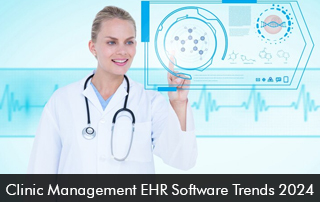In today’s changing healthcare sector, the introduction of Clinic Management Electronic Health Record (EHR) software has transformed patient care and administrative operations. These innovative technologies simplify operations, improve data accessibility, and enable healthcare professionals to provide better services. As we approach 2024, World BI looks at the growing trends influencing Clinic Management EMR software and their far-reaching ramifications for healthcare institutions worldwide through their insightful and educational events.
What is Clinic Management EMR Software?
Clinic Management EHR software is a digital platform that stores, manages, and shares patient medical data and health-related information. These comprehensive systems combine several capabilities, such as patient scheduling, medical charting, invoicing, and prescription administration, into a single interface. EMR software digitizes healthcare data, eliminating the need for burdensome paper-based records and allowing for easy information exchange across healthcare networks.
What are the Advantages?
Enhanced Efficiency:
Streamlined workflows and automated procedures improve clinic operations by lowering administrative burdens and increasing productivity.
Improved Patient Care:
Access to full patient records allows healthcare practitioners to make more informed clinical decisions, resulting in better treatment results and patient satisfaction.
Enhanced Data Security:
Advanced encryption techniques and strict access restrictions protect the security and integrity of patient health information, lowering the risk of data breaches and unauthorized access.
What are the Disadvantages?
Implementation challenges:
Transitioning from paper-based systems to EHR software may provide some early hurdles, like as staff training and workflow modifications.
Cost considerations:
While EMR software provides long-term cost advantages, the initial expenditure in software deployment and upkeep can be significant for healthcare organizations.
Interoperability Issues:
Ensuring interoperability and easy data interchange between various EMR systems is still a difficulty, impeding the realization of a completely linked healthcare environment.
How do we Integrate?
One rising trend in Clinic Management EHR software is the incorporation of wearable devices. As wearable technology becomes more common, healthcare professionals are looking at methods to integrate data from devices like fitness trackers, smartwatches, and remote monitoring devices into patient records. This interface enhances patient monitoring by allowing healthcare practitioners to track vital signs, activity levels, and other health parameters in real-time.
What Customization and Scalability look like
Another key feature of EMR software developments is the emphasis on customization and scalability. Healthcare organizations have a wide range of needs and requirements, and EHR systems must be adaptable enough to meet these changing expectations. Customizable features and modules enable healthcare professionals to adjust the program to their unique processes and preferences. Scalability is also critical for accommodating growth and changes within the organization, ensuring that the software can expand to meet changing demands over time.
Importance of Patient Engagement and Empowerment
In today’s healthcare environment, patient participation and empowerment are critical. EMR software trends are increasingly emphasizing patient interaction with features like patient portals, encrypted chat, and access to personal health information. These technologies enable people to take an active part in their healthcare journey by improving communication with clinicians, accessing educational materials, and maintaining their health information more efficiently.
What does the Future look like?
Artificial Intelligence Integration:
Integrating AI and machine learning algorithms with EHR software will allow for sophisticated analytics, predictive modeling, and personalized patient care recommendations.
Interoperability Improvements:
Efforts to standardize data formats and protocols would allow for easy interoperability across diverse EMR systems, encouraging cooperation and information sharing across healthcare networks.
Telehealth Integration:
As telehealth services gain popularity, future EHR software iterations are projected to seamlessly integrate with telemedicine platforms, allowing for virtual consultations, remote monitoring, and telehealth data collecting.
To summarize, Clinic Management EMR software is at the forefront of healthcare innovation, providing unique benefits in terms of efficiency, patient care, and data security. As we traverse the ever-changing environment of healthcare technology, adopting these trends will be critical for healthcare organizations to remain competitive and provide improved patient results.







